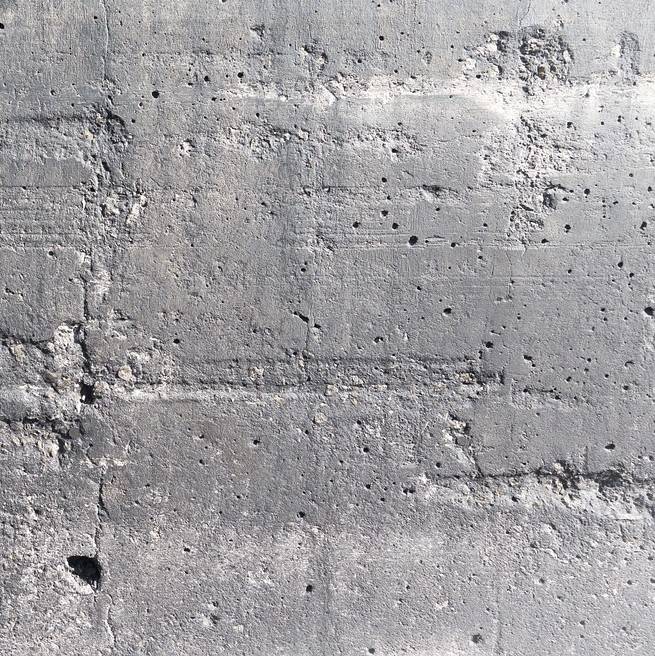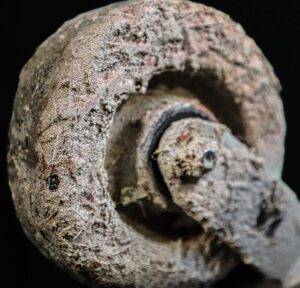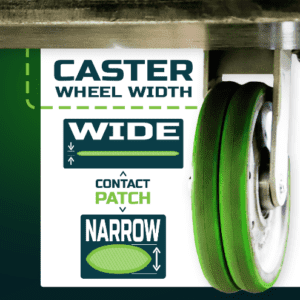

Epoxy warehouse floors are standard in many warehouses and factories and are the pride of many plant managers. But that all changes when epoxy floor damage results due to the debris cart wheels pick up. It’s a problem that is not only unattractive but also a costly fix.
When material handling carts get heavy, harder wheels are often used. That’s because the harder the wheel, the easier it’s going to roll.
The problem is a more rigid wheel, like a heat-treated steel wheel, will be easy to roll – but it is going to tear up your floors — and you will have to live with the cost of repairing your floor every six months or so.
Even a standard concrete floor can get torn up by a hard wheel. And replacing and repouring sections of concrete gets expensive in terms of both cost and downtime.
 Harder wheels also tend to pick up debris. Harder wheels like nylon and some hard plastics might be easier to roll initially, but they tend to pick up debris. This happens whether the cart is moved manually or moved by mobile equipment.
Harder wheels also tend to pick up debris. Harder wheels like nylon and some hard plastics might be easier to roll initially, but they tend to pick up debris. This happens whether the cart is moved manually or moved by mobile equipment.
And once that debris collects, the constant bump-bump-bump as the wheel is rolling with all that junk attached causes the outside of the wheel to separate from the Hub. Now, you’re moving metal on concrete, which quickly leads to damage.

The nice thing about using softer materials like urethanes is that they reject debris better because of their rebound properties. Certainly, you can get some cheap urethanes that will act just like hard plastic, but the high-quality stuff will reject that debris as well.
On the flip side, if you go too soft and the cart has a lot of weight and stays for a long time in a stationary position, it tends to want to flatten out. This causes flat spots in the wheels, which can affect your roll.
Also, the softer the wheel, the larger your contact path, which is the surface area where the wheel meets the floor. A larger contact patch means you will have more scrubbing (the caster “scrubs” the floor when turning, causing friction that makes the wheel harder to turn) while also increasing the possibility of the tread marking the floor.